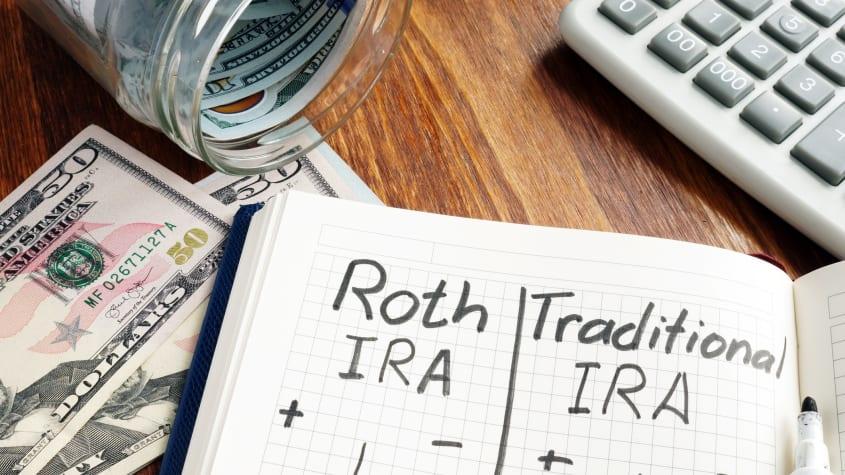One of the biggest fears of any new or seasoned investor is losing money. This fear can actually inhibit some people from ever investing at all, and it might also lead to selling preemptively or opting for the lower risk investment option time and again. To minimize the fear of losing money, investors sometimes choose to go with a risk-reduction strategy, such as Dollar Cost Averaging (DCA).
Despite the fact that the majority of academic research has shown that dollar cost averaging may help to manage risk, but that on average it just reduces returns (and therefore is inferior to lump-sum investing), the popularity of DCA remains high among practitioners and the investing public.
However, given that research has shown that the pain of losses is more severe than the joy of gains for investors1, risk-averse investors may prefer to dollar cost average simply to minimize the potential regret of not doing so and seeing markets decline shortly thereafter.
What is DCA?
DCA is an investment tactic in which a fixed amount of money is invested at regular intervals. The intended goal of DCA is to provide the investor with a lower average cost of shares over time. Since the investment amount will be the same at each interval, the idea is that more shares will be purchased when the price is low, while fewer will be purchased when the price is more expensive.
Those who support the use of DCA claim that it can provide a lower average purchase price for a risky asset, proposing that purchases of assets (that are higher risk) with DCA when prices are declining will provide better returns than lump-sum investing.
What are the Proposed Benefits of DCA?
Risk Mitigation
By only investing a portion of your lump sum, price drops will not impact your portfolio as heavily had you invested a larger portion or your entire sum. Dollar-cost averaging is meant to mitigate the risks involved in lump-sum investing through which an investor could face major losses if the market crashes or prices fall drastically. Risk-aversive individuals may, therefore, prefer to use DCA.2
Managing Emotions
Market fluctuations and losses can greatly affect an individual’s emotional well-being. Further, emotional responses to these ebbs and flows, such as overconfidence or panic, can affect future investment decisions.3 Since only part of a sum is exposed to the market, losses may not be as drastic. Therefore, many individuals may experience a duller emotional reaction than if all of their sums were to be affected, decreasing the likelihood of their making emotionally-driven investment decisions in the future.4
As such, DCA may be good option for those looking to minimize the impact of emotion on their investment choices.
What are the Critiques of DCA?
Missing Out On Gains
When employing dollar-cost averaging, portions of your money sit uninvested. The main argument against DCA is that these portions are not given the chance to accumulate any return at all. As a result, some investors and financial professionals may prefer another strategy such as lump-sum investing, which exposes a larger portion of your funds to the market.
Lump-Sum Investing vs. DCA
In lump-sum investing, a larger portion of your money is given the chance to make gains sooner rather than later. However, investing a significant portion of your money also means that you may experience more pronounced losses in a vacuum. Over time, however, you can make up for these losses. This long-term thinking also supports the idea behind dollar-cost averaging. Ultimately, the decision to use either tactic will depend on your unique situation.
When to Consider Using DCA
Investors might choose to employ dollar-cost averaging for a variety of different reasons, including for investments that are historically more volatile. DCA is also a way to potentially regulate emotional responses. Dollar-cost averaging might be used in the following circumstances:
- Volatile investments
- Other long-term investments, such as 401(k)’s or IRA’s
- A time in life where any volatility is not feasible and may cause immediate ramifications (i.e. nearing retirement)
- Individuals who are risk-aversive
- Individuals who do not have the funds for a lump-sum investment
The alleged benefit of dollar-cost averaging is that it encompasses the unpredictability of the market yet intends to lower the cost of your shares as a result. When choosing how to invest, it is wise to seek the counsel of a financial advisor, who can help you make the best choice for your circumstances and future goals.
- https://www.apa.org/science/about/psa/2015/01/gains-losses
- https://www.onefpa.org/journal/Pages/OCT15-Dollar-Cost-Averaging-The-Trade-Off-Between-Risk-and-Return.aspx
- https://www.aeaweb.org/articles?id=10.1257/jep.29.4.61
- https://www.onefpa.org/journal/Pages/FEB18-Using-a-Behavioral-Approach-to-Mitigate-Panic-and-Improve-Investor-Outcomes.aspx




